Kashgar
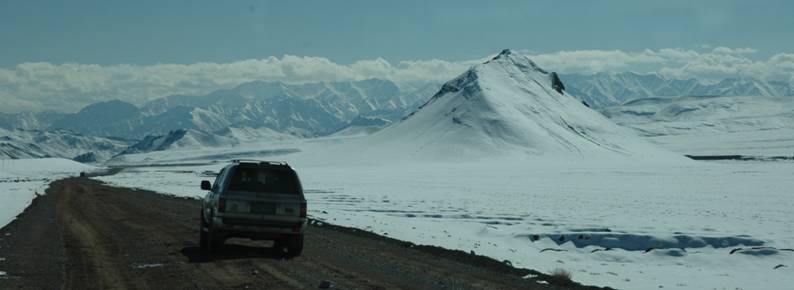
Our descent from the pass for the next 7 hours was a mix of stunning scenery, the worst road we had so far experienced and an extraordinary amount of beurocracy, some of it very petty as we attempted to temporarily import ourselves and our vehicle into China.
The Chinese politic has a love of red tape, much of it designed for a love of systemisation and much more of it designed to provide an income to support an immense political system. As foreigners trying to take our own vehicle across two of China’s most sensitive Autonomous Regions our dose of beurocracy has been heavier than most. Apart from our Chinese Visa we have required temporary driving licenses for myself and Ruth, a temporary import deposit, license plate and tax for the car, a guide and permits for each region and smaller county that we would be passing through. This adds up to an immense mound of paperwork, all of which can be demanded at numerous check points along our route. We used a travel agency to deal with all the necessary applications, however the cost and complexity of this journey, quite apart from the physical challenge is one reason why we saw only one other foreign owned car in our month in China.
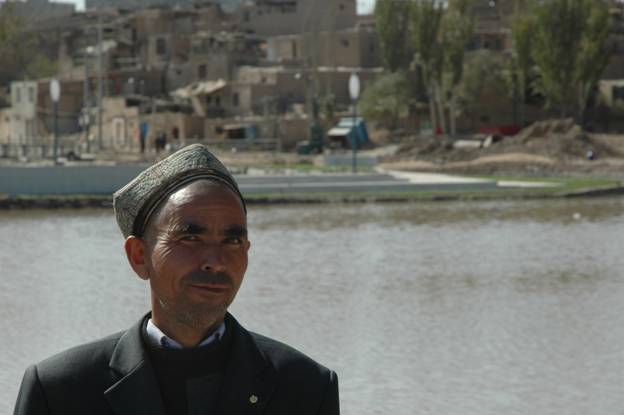
We had too little time in Kashgar having made the decision early on in our planning to continue through to Tibet. However, what little time we did have was a wonderful experience. Kashgar is the capital of the XinJiang province which is the traditional home of the Muslim Uigher people, a group that has more in common with the people of Central Asia than with the now dominant Han Chinese from further East. We found the language, eye for trade, looks and outward personality very familiar and welcoming.
Ruth chose this moment to fall ill herself, however either alone or together we managed to get around most of the tourist circuit: the old town, Friday mosque, Sunday market and the tomb of Aback Hoja, a Uigher prince credited with spreading Islam throughout XinJiang.
The old town of Kashgar is very different from the multiple stories of gleaming tile and steel that is the familiar look of the Han Chinese quarter. Brick and adobe houses grow from the earth like the many poplar trees in the centre of Kashgar. Ground floors are home to countless small businesses tucked just off the streets: metalworkers creating stoves, boxes, pots and pans; woodworkers working the locally grown poplar into table legs, bread stampers, rolling pins and handles for countless kitchen utensils prepared by the metalworkers; bread makers using a clay oven onto which the round flat bread is stuck using a thin film of water against the bread. The sight of so much skilled activity is endlessly fascinating, especially when happily unemployed.
Many of the homes in the old town are hundreds of years old, however the region is prone to earthquake, which has given the local government reason in the past to embark on a process of destruction and renewal. This, amongst other grievances against the predominantly Han local government, has often lead to protest, the most recent and much publicised earlier this year. The current compromise is a voluntary replacement of the oldest houses with new build using traditional methods and with 50% of the expense covered by local government.
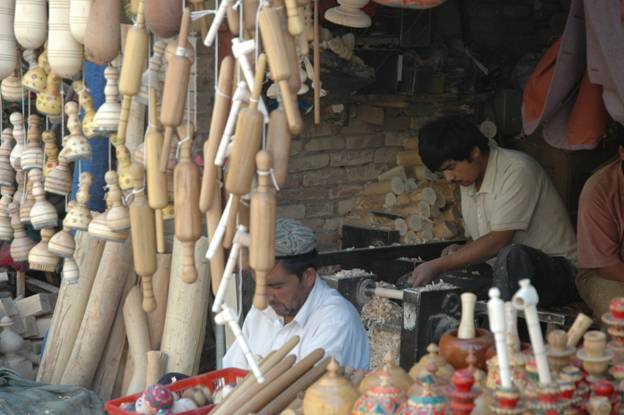
We had grown used to Asian bazaars, however the Kashgar Sunday market seemed to be setting a new standard of Silk Road trade. The market is largely covered and arranged rather like a western department store with sections selling hardware, others selling homeware, cookware, clothing, carpets, Uigher knives, Chinese herbs and tea and with occasional refreshment stalls for the hard working shopper. One stall sold a wide selection of plastic carrier bags: If you have ever wondered what happened to the immense stock of carrier bags when the Western consumer banished them from supermarkets and department stores – they have been recycled to Central Asia. One or two brands in particular keep cropping up – one I have never heard of “Aygen” and the more familiar Wm Morrisons. After a couple of hours of wandering we bought tea and finally a many coloured, felt Kyrgyz carpet that had no doubt taken the same route as we had to get there.
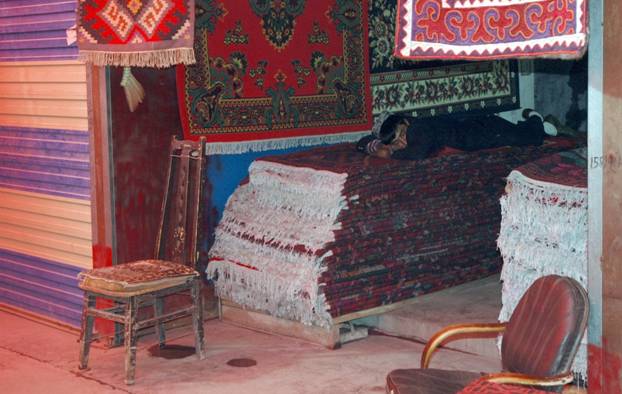
After the intense activity of the market, our tours to the holy sites were a relief. Both the Aback Hoja tomb and the Friday mosque were beautifully crafted, their courtyards calm amid poplar trees and pools of water.
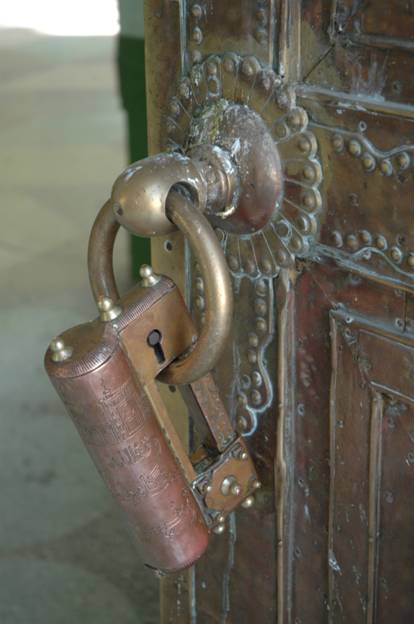
Last Updated (Friday, 04 December 2009 05:51)
